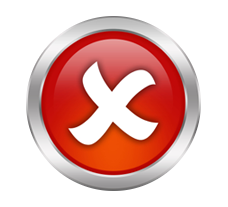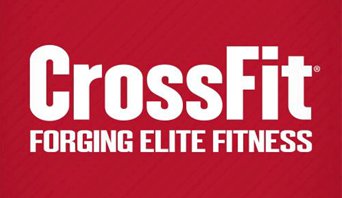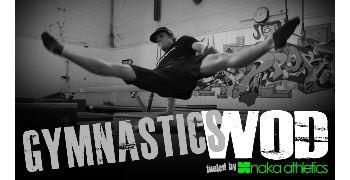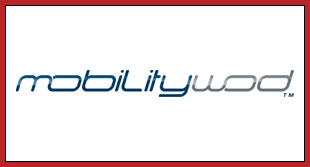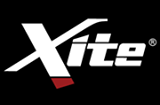Nutrition
1. What should I eat? (written by: http://crossfitimpulse.com/nutrition)
When transitioning from a typical American diet to a healthy diet, which should never be mistaken for the same thing, we recommend a two-step process. First, transition to eating only quality foods that our bodies are made to eat. This is the tough part for most people because it involves eliminating (or at least drastically reducing) grains, bread, and other refined and processed carbohydrates. Shop the perimeter of the grocery store for lean meats, fruits and vegetables, nuts, and seeds. This article on basic nutrition will explain everything clearly. You’ll often see this referred to as eating “clean” or eating “Paleo.” Eating Paleo technically means you follow the Paleo diet, which eschews legumes, dairy, grains, and salt completely. We don’t recommend you worry about completely eliminating all of those foods at first, but you’ll need to know the terminology.
2. I’m eating quality foods. What now?
Next, we recommend eating those quality foods in proportions that will fuel your athletic activity and provide hormonal balance. The best way we have found to achieve this is the Zone Diet. The Zone Diet prescribes 40% carbs, 30% protein, and 30% fat for every meal. It also prescribes that you eat several small meals throughout the day. However, the ratio that is perfect for you is tied to your genetics, and may be slightly different than 40/30/30, but that’s the best starting point. You can read our definitive guide to the Zone diet here.
3. My husband/wife will never go for this. What should I do?
This isn’t a nutrition question, but rather a question of leadership. First, sticking to any nutrition plan will be very difficult if your spouse isn’t on board. The simple task of preparing two different meals for two people is by itself contentious. Furthermore, when your spouse sees you making good choices he/she may question or ridicule your decisions due to feelings of guilty or inadequacy. Your spouse may also think that you are shoving a diet onto them because you are unhappy with them. These are difficult barriers, even if you do everything correctly. We suggest presenting the information that has fueled your decision in a logical way that isn’t emotionally charged. It’s important for loved ones to know that your desire is simply to improve your health and fitness. If after addressing these issues you still arrive at an impass then you may simply have different goals than your spouse or have a much greater desire to achieve them.
4. What about my kids?
Feed them the same quality foods, but don’t worry about regimenting total volume of food for a growing child. Just make sure they eat real food (see Question #1) and get some protein, fat, and quality carbs (fruits and vegetables) at every meal. If you think they’ll protest when you serve them grilled chicken and vegetables rather than chicken McNuggets and macaroni and cheese, then we suggest you be a leader and stand your ground on what’s best for your child–not what satiates their desire or temper tantrum at that moment. Sometimes being a leader is tough. I promise, they’ll eventually get hungry enough to eat what you serve. I’ve personally fed an infant grass fed ground beef and strawberries, and all he had to say was “Mmmmm!” Gerber wasn’t around 100 years ago, but humans were, and somehow we survived.
5. How do I cook all my favorite pastas, casseroles, and desserts and still follow a Paleo/Zone Diet?
You don’t. Eating healthy is a lifestyle change. Many things from your old lifestyle simply do not fit in your new lifestyle of healthy eating. Now that’s not to say you have to give up anything completely. Everyone let’s loose and has a cheat meal or dessert from time to time. But what you shouldn’t do is go crazy trying to modify all your favorite high-carb meals into something Zone and Paleo friendly, because it just doesn’t work. The underlying issue is breaking the emotional connection to food. Food is fuel. Just eat it and get on with life. Food is not a way to achieve happiness. Happiness is what happens in life when you’re done eating. If you get emotional fulfillment and gratification from food then it’s evidence of a hole in your life that you’re trying to fill. As a healthy way to set and achieve goals and spend time with like-minded people, CrossFit is part of what will fill that hole. But you have to start by realizing the situation and accepting that if you want to change then you’ve got to change. Your old dietary habits will just give you your old results. Christina has penned an article on Cooking in the Zone that can help you change your cooking methods to still fit some of your old favorites into the Zone Diet. Check it out.
6. What about alcohol?
Obviously, alcohol is very bad when used to excess. However, casual use can still fit into a healthy lifestyle. Alcohol is generally a liquid carb that your body absorbs very quickly. Some drinks containing dairy may also be heavy in fat (e.g. Baileys…creamy). Keep that in mind when drinking alcohol with a measured Zone meal so you can maintain the appropriate carb/protein/fat ratios. How much is too much? Only you can really decide. Most CrossFit athletes I know, including myself, consume alcohol occasionally. I also know successful athletes that have beer every evening. And many other successful athletes completely abstain from alcohol. Overall, just make sure your alcohol use is for recreation, not dependency, and then fit it into your nutrition and training plan. Alcohol also affects your sleep, recovery, and body composition, so it’s always an area to examine if you’re not achieving your goals.
7. Do you recommend any supplements?
The nature of most athletic supplements is not applicable to our ethos of lifelong, sustainable fitness. We CrossFit to have a longer and better life, not necessarily to add 40 pounds to our back squat at any cost. However, we do engage in athletic competition as a celebration of our fitness and as a way to better ourselves. If you have a specific goal to train for and win a specific competition, then you may want to use athletic supplements to achieve that goal. Many supplements are very reputable, safe, and proven. However, if you’re simply trying to improve yourself or become a better athlete, then supplementation isn’t necessary. You’ll be astounded how quickly your body will change through regular CrossFit training, sound nutrition, and adequate rest–no supplements required.
8. What is fish oil?
Fish oil is the one exception to the rule that we generally don’t use supplements. But it’s not really an exception, because it’s not really a supplement. The short story is that your body needs Omega 3 fatty acids for all of life’s important functions: thinking, tissue repair, everything. The human diet 40,000 years ago provided us with plenty of Omega 3s. Our modern diet provides us with very little, even when eating healthy as CrossFitters do. Fish oil is the single best way to get the Omega 3s that your body needs. We’ve written a complete resource called “Why Fish Oil?” that will explain the nitty gritty facts behind why we use it and how we use it. Give it a read for the full story. The short story is that fish oil is the single easiest step you can take towards a solid CrossFit diet.
9. What should I eat before a workout?
These last two topics are minor details that we recommend you don’t worry about until you have all your other nutrition decisions correct. If you are worried about pre and post-workout nutrition and timing but you’re still having a slice of banana bread and saltine crackers for lunch then you’re completely putting the cart before the horse. Get the basics right first and then let the details follow. So on to the answer…For optimum performance, in the 24 hours prior to a workout you should eat Zone proportion meals from clean food sources, just as we recommend you eat every day. The only real question is what volume of food should you eat prior to a workout, and the answer is unique to every athlete. Almost nobody prefers eating immediately prior to a workout, in the 30 minutes or less before 3, 2, 1, GO! Most athletes eat an hour or more prior to the workout. Some athletes find they must fast longer prior to the WOD in order to avoid nausea. However, your performance will suffer if you don’t consume some fuel before the WOD, so make sure you’ve eaten a quality meal sometime in the 1-4 hours prior. Only experimentation and finding what works for you will yield the answer
10. What should I eat after a workout?
Again, before you worry about post-workout nutrition you should be maintaining a strict Zone-Paleo diet and training regularly. I get the feeling that many people think they can find the magic bullet here, and somehow by drinking the perfect blended concoction of unicorn tongue and Cinnamon Toast Crunch right after a WOD they can ignore nutrition the other 23 hours of the day that comprise most of your results. Just like in most of life, results aren’t achieved through one masterfully planned and incredibly executed event, but rather through an endless string of small but intelligent decisions all day, every day. However, if you are ready to investigate post-workout nutrition to improve your results, then read on.
The objective of post-workout nutrition is to optimize recovery by replenishing glycogen stores and providing protein to begin tissue repair. In theory, this improves the results of your next WOD, decreases hunger throughout your day, and improves body composition. However, despite all the possible benefits, implementation is quite varied among different athletes. The common trend seems to be
High glycemic load carbohydrates (fruits, berries, sweet potatoes, etc.)
Easily digestible protein (eggs, milk, etc.)
The science behind post-workout nutrition is that in the time window directly after high intensity exercise your body gets a “get out of jail free” card with respect to high glycemic carbs. This window spans from when you finish your last rep to 2 hours later, but is most potent in the first 30-45 minutes after the WOD. Not only are you less affected by an insulin spike during this time, but your body can actually productively use that insulin in replacing glycogen. Some athletes also like to include protein to start the tissue repair process. Therefore, most post-workout meals are light 1-2 block snacks that might be more carb heavy than a strictly Zone balanced meal. As an example, here are the post-workout meals of some of CrossFit’s tops trainers and athletes:
- Miranda Oldroyd drinks a 20 oz chocolate milk within 10-15 minutes after her WOD.
- Matt Chan recommends a fast digesting protein such as eggs and carbs such as fruits and berries.
- Chris Spealler eats Progenex, which is a brand of supplements in the form of a protein shake.
- Greg Amundson eats a regular zone proportion meal.
- Mike Giardina eats a 2 block protein shake made with Progenex and coconut milk, with coconut water added
after metcons.
- Nadia Shatila eats a slightly carb heavy meal of sweet potatoes, chicken, and fat.
- Josh Everett eats sweet potatoes and chicken breast.
Much like pre-workout nutrition, take these guidelines, experiment, and find what works for you. And remember that post-workout meals are crossing the t’s and dotting the i’s on an already solid nutrition plan. They aren’t the focus of a solid nutrition plan.
